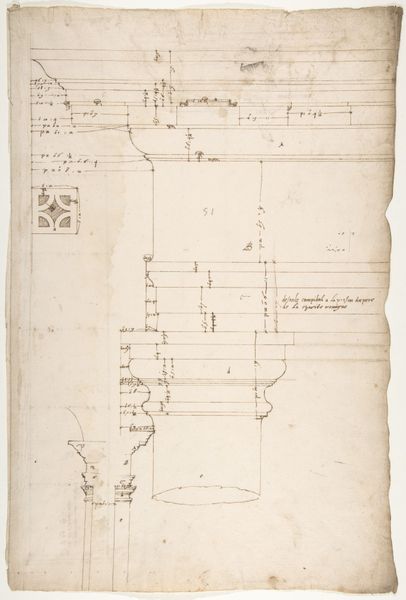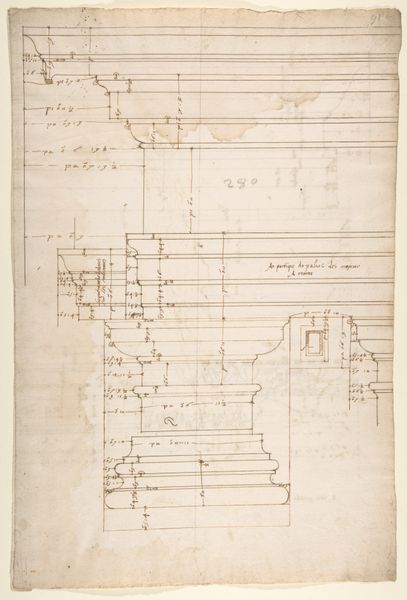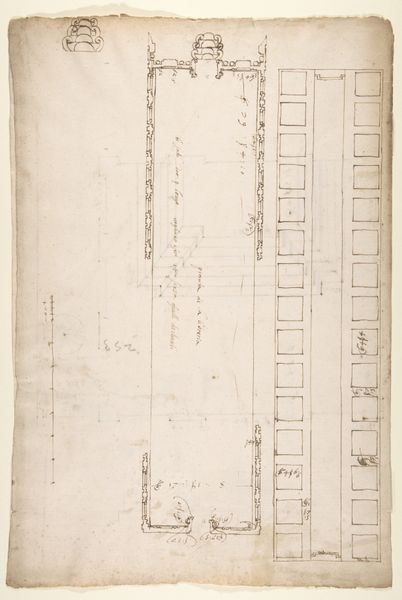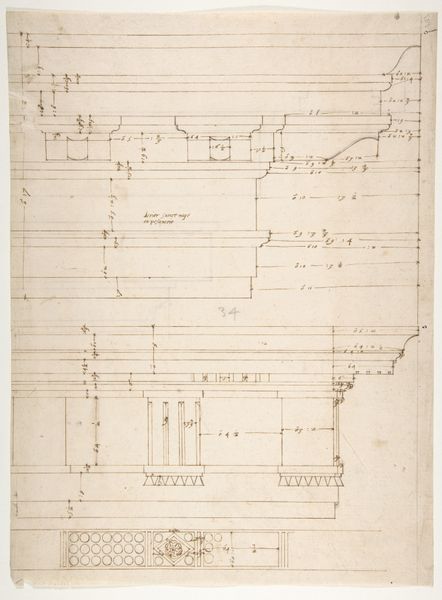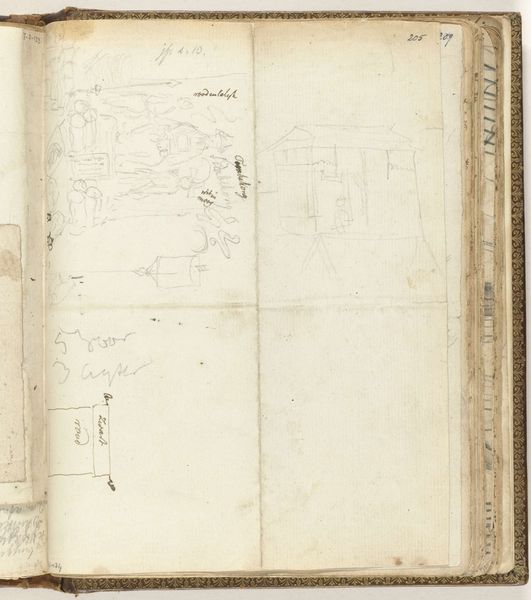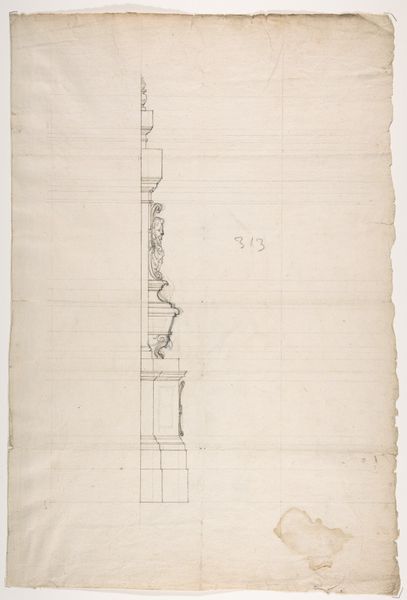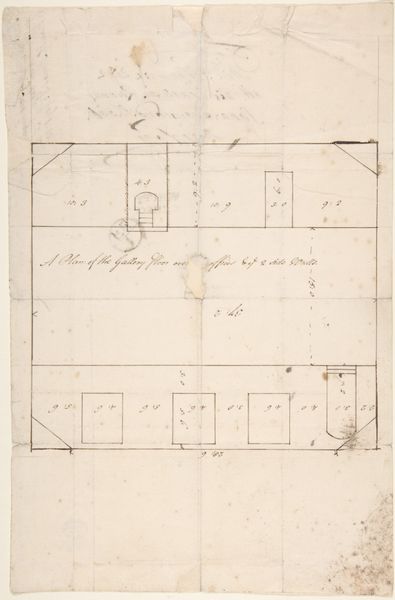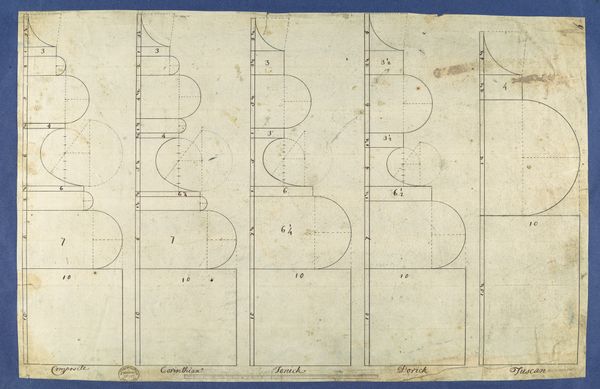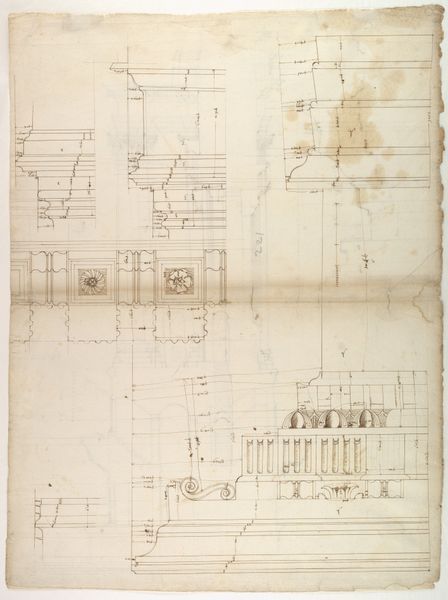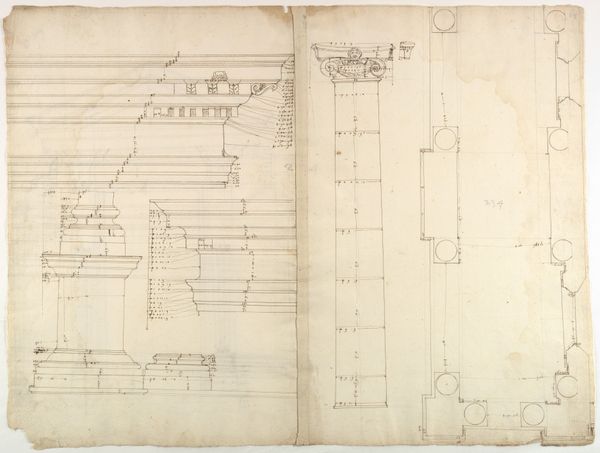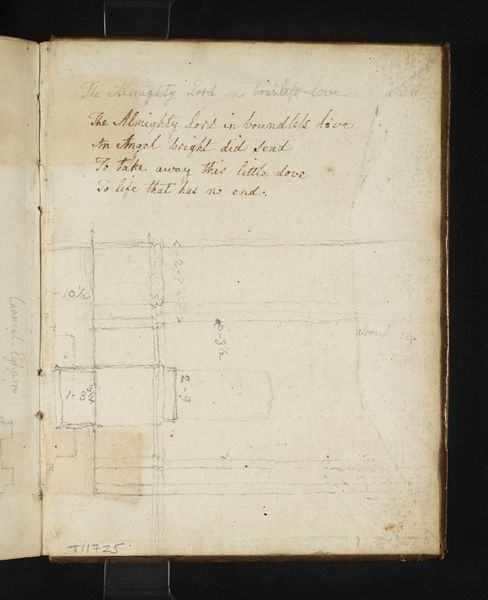
St. Peter's, tribune, exterior, entablature and cornice details (recto) Santa Maria Maggiore, Sforza Chapel, plan, detail (verso) 1500 - 1560
0:00
0:00
drawing, print, paper, ink, architecture
#
drawing
# print
#
paper
#
ink
#
architecture
Dimensions: sheet: 17 1/8 x 11 9/16 in. (43.5 x 29.3 cm)
Copyright: Public Domain
Editor: This intriguing drawing, created anonymously between 1500 and 1560, depicts architectural details of St. Peter's and Santa Maria Maggiore, rendered in ink on paper. The precision is quite captivating! What architectural meanings can we decipher from these measured drawings? Curator: What strikes me is the quest for ideal forms in sacred spaces, the very architecture designed to facilitate divine connection. Notice how the entablature and cornice details aren't merely structural; they’re symbolic gestures, speaking to power, permanence, and the aspiration towards heavenly realms. Do you see how these measurements translate into something grander than just stone and mortar? Editor: It’s like they are literally encoding their aspirations. Are there any specific elements that speak most strongly to that symbolism? Curator: Absolutely. The cornice, for example, isn't just a finishing touch; its projection and embellishment suggest a sheltering, protective presence. Consider how the ancients employed similar motifs. Doesn’t this carry forward a sense of cultural memory? Editor: Yes, the connection to classical forms is undeniable. I guess I hadn't thought of the architecture itself as an ongoing visual language. Curator: Precisely. This drawing captures a fleeting moment in that conversation, revealing how architects grappled with tradition, innovation, and the very act of translation. Editor: This has really opened my eyes to the symbolic power embedded within architectural designs. I will certainly look at buildings differently from now on. Curator: Indeed. The image retains echoes across time and resonates deeply with cultural meaning.
Comments
No comments
Be the first to comment and join the conversation on the ultimate creative platform.
